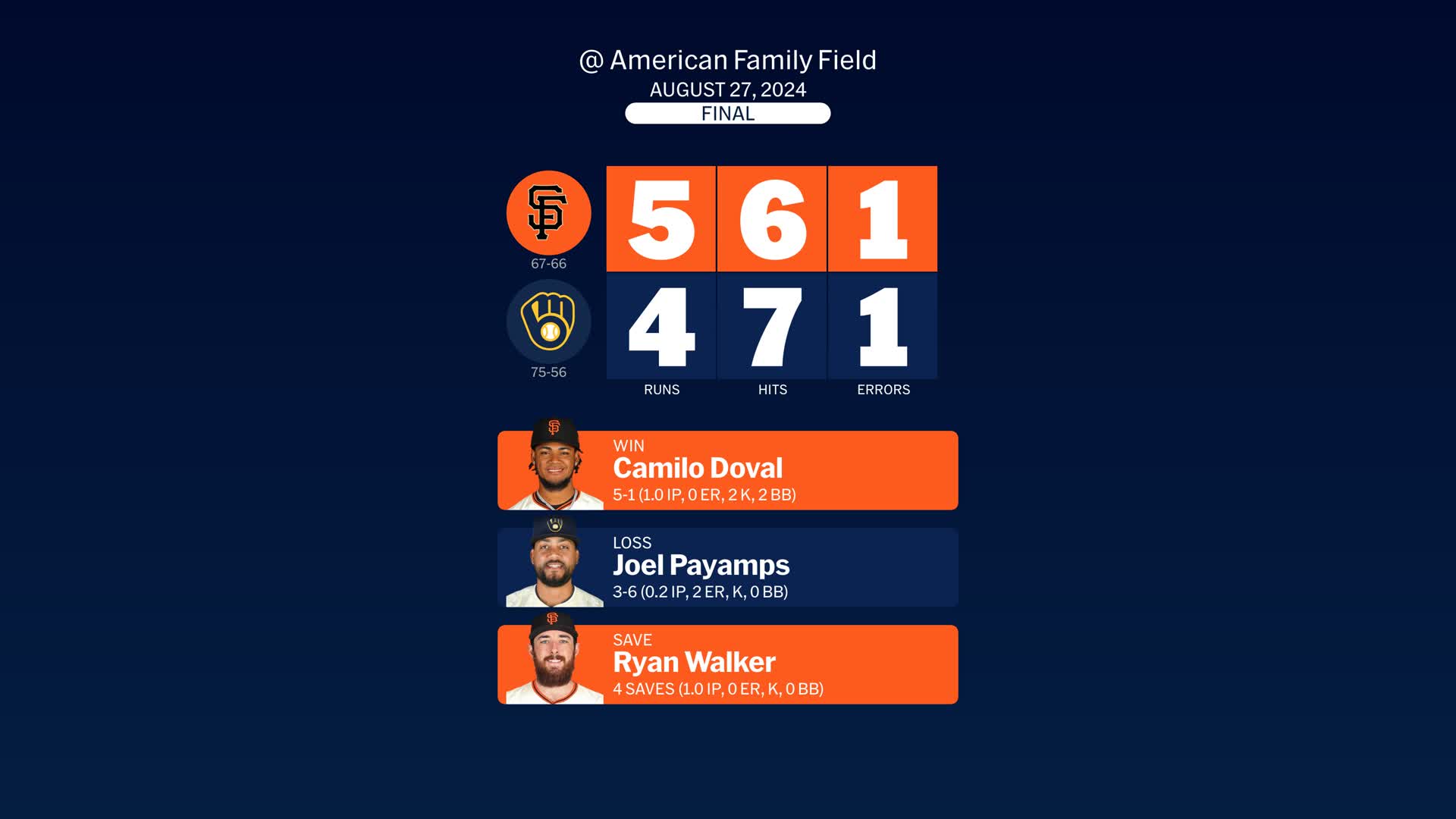Okay, so today I wanted to mess around with some baseball stats, specifically from the San Francisco Giants vs. Milwaukee Brewers game. I’ve always been a huge Giants fan, and I figured it would be fun to dig into the numbers a bit.

Getting Started
First things first, I needed to find the data. I spent some time browsing around, and finally, I found a good source with all the player statistics I was looking for. It wasn’t exactly in the format I wanted, but hey, that’s part of the fun, right?
Data Wrangling
Once I had the data, it was time to get my hands dirty. I copied everything into a spreadsheet to start organizing it. It was a bit of a mess at first, with stats all over the place. There were batting averages, RBIs, strikeouts, and a whole bunch of other stuff. I spent a good chunk of time sorting, filtering, and basically just trying to make sense of it all.
After a while, I started to see some patterns. I grouped players by their positions and then looked at their performance metrics side-by-side. This made it way easier to compare, say, the first baseman’s stats to the shortstop’s.
Diving Deeper
Then, I got a bit more ambitious. I wanted to see how specific players performed in key situations. I started filtering the data based on things like the inning, the number of outs, and whether there were runners on base. This is where things got really interesting. I could see which players really stepped up when the pressure was on.
- Batting Averages with Runners in Scoring Position: Some players had surprisingly high averages when there were runners on second or third base. This was super cool to see because it showed they could deliver in clutch moments.
- Strikeouts vs. Walks: I also looked at the ratio of strikeouts to walks for each player. This gave me a good sense of their plate discipline and how likely they were to get on base.
- Performance by Inning: It was fascinating to see how players’ performances changed throughout the game. Some seemed to start strong but fade later on, while others got better as the game progressed.
Putting It All Together
Finally, I took all my organized data and started creating some simple visualizations. Nothing too fancy, just some basic charts and graphs to highlight the key findings. This made it much easier to see the trends and patterns at a glance.
For example, I made a bar chart comparing the on-base percentages of each player. It was immediately obvious who the most consistent hitters were. I also created a scatter plot showing the relationship between a player’s slugging percentage and their number of home runs. That one was pretty cool because it showed a clear correlation—the higher the slugging percentage, the more home runs.
All in all, it was a really fun and insightful process. I learned a lot about the individual players and how they contributed to the team’s overall performance. Plus, I got to brush up on my data analysis skills, which is always a good thing. This little project definitely made me appreciate the game even more. Maybe I’ll do this for other games and see what I can find!














